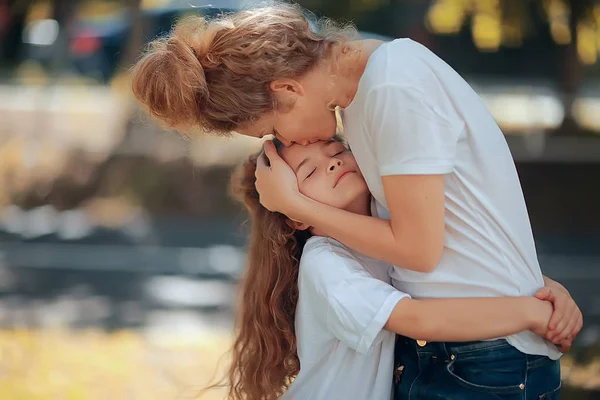Signs he is hiding his feelings for you might include subtle glances filled with unspoken emotions, guarded conversations that conceal a deeper sentiment, and a noticeable effort to maintain a composed demeanor despite the potential storm of emotions within.
In the intricate dance of emotions, deciphering whether someone is concealing their true feelings can feel like navigating a labyrinth of subtle clues and unspoken gestures. Signs He Is Hiding His Feelings For You
When it comes to matters of the heart, decoding the signs that suggest he might be hiding his feelings for you becomes an intriguing puzzle, one where every glance, every word, and every fleeting smile unveils a layer of mystery.
In the symphony of human connection, the unsaid often speaks the loudest, and as you embark on the journey of unraveling the enigma of his emotions, you may find yourself in a captivating pursuit of the unspoken truths that lie beneath the surface.
So, fasten your seatbelt as we navigate the uncharted territory of hidden emotions and embark on the quest to unveil the secrets behind the signs he is concealing his feelings for you.

Signs He Is Hiding His Feelings For You
Elusive Eye Contact
One of the primary clues suggesting a man is concealing his feelings is elusive eye contact.
When someone harbors deeper emotions, maintaining prolonged eye contact can be challenging for them. If he frequently looks away or avoids direct gazes, it could be a sign he’s guarding his true feelings.
Guarded Body Language
Watch out for guarded body language, as it often reveals more than words. Crossing arms, maintaining physical distance, or fidgeting can indicate discomfort.
These defensive postures may signify an attempt to shield inner emotions, making it essential to pay attention to non-verbal cues.
Vague Communication
When a guy consistently keeps his emotions under wraps, his communication style may become vague.
He might steer clear of discussing personal matters or resort to ambiguous responses when the topic turns emotional. Listen for evasive language or a reluctance to delve into deeper conversations.
Mixed Signals
Mixed signals can be confusing but are common when someone is hiding their feelings. He might show intermittent signs of affection followed by sudden emotional distance.
These fluctuations could be a result of internal struggles between expressing genuine emotions and maintaining a fa-cade.
Protective Teasing or Mocking
Some individuals use humor as a shield to protect their true feelings. If he tends to tease or mock you playfully but shies away from sincere expressions, it could be a defense mechanism.
Pay attention to the tone and context of such interactions to gauge whether it’s a way to conceal deeper emotions.
Verbal Communication:
Lack of Direct Expression:
Emotional Hurdles:
Individuals grappling with a lack of direct expression often find it challenging to utter the simple yet profound words, “I love you.”
This difficulty stems from a nuanced struggle to articulate and convey deep-seated emotions.
Vague Verbal Terrain:
The use of vague language or ambiguous statements becomes a common linguistic trait.
Avoidance of Personal Topics:
Emotional Detours:
Those averse to direct expression tend to sidestep discussions about emotions altogether. Conversations steer away from personal feelings, creating an emotional detour that leaves the core sentiments unexplored.
Silent Reservations:
Reluctance to share personal experiences or thoughts leads to a silence laden with unspoken reservations. The avoidance of these topics becomes a shield, guarding the individual’s inner world from external scrutiny.
Non-Verbal Cues
Non-verbal cues play a crucial role in communication, revealing unspoken emotions and thoughts. Understanding these cues is vital for interpreting the underlying messages individuals convey without words.
Limited Eye Contact
Limited eye contact can signify various emotions and mental states, impacting interpersonal connections.
Individuals may experience difficulty maintaining eye contact, especially during emotional conversations, reflecting feelings of vulnerability or discomfort.
This behavior is often described by observers as an indicator of hesitancy or unease.
Additionally, frequent glances accompanied by quick averted gazes may suggest distraction or an attempt to conceal true feelings, reflecting an individual’s hesitancy to fully engage in the conversation.
Body Language
The body speaks volumes, and subtle movements can provide insights into an individual’s state of mind.

A closed-off posture, characterized by crossed arms and tense shoulders, is commonly associated with defensiveness or resistance.
Observers often describe such body language as indicating a desire to create a barrier, hindering open communication. Moreover, unconscious fidgeting or nervous gestures can betray inner turmoil.
Inconsistent Behavior:
In the intricate dance of human emotions, navigating through inconsistent behavior can be perplexing. Individuals often find themselves entangled in a web of mixed signals, where affection and distance collide.
These perplexing dynamics are characterized by hot-and-cold responses to emotional situations, leaving people bewildered and seeking clarity.
Mixed Signals
Engaging in both affectionate and distant behavior
Caught in the ambiguity of mixed signals, individuals experience the perplexing duality of affectionate gestures intertwined with moments of deliberate distance.
This rollercoaster of emotions often leads to confusion, as the individual oscillates between warmth and detachment.
Hot-and-cold responses to emotional situations
In the realm of inconsistent behavior, emotional situations become a battleground of conflicting responses.
Hot-and-cold reactions leave those involved grappling with uncertainty, unsure of how to interpret the ever-shifting emotional landscape.
Sudden Mood Changes:
Emotional turbulence takes center stage as sudden mood changes become a hallmark of inconsistency.
Unexplained shifts from happiness to distant or sad states create an emotional puzzle that individuals must unravel, trying to make sense of the unpredictable twists and turns.
Unexplained shifts from happy to distant or sad
In the enigma of inconsistent behavior, emotions undergo unexplained shifts, transforming moments of joy into sudden distance or unexpected sadness.
Navigating this emotional rollercoaster becomes a delicate balance, demanding an understanding of the underlying causes.
Inconsistency in emotional reactions
The inconsistency extends beyond specific situations, permeating overall emotional reactions. Describing this emotional complexity.
Protectiveness:
Overprotective Behavior
Unnecessary concern for your well-being
In the realm of relationships, overprotective behavior manifests as an excessive worry for a partner’s well-being.
This often leads to an abundance of caution, with individuals going to great lengths to safeguard their loved one’s safety and happiness.
Such behavior may be driven by genuine care but can inadvertently stifle personal growth and independence.
Extreme efforts to shield emotions or vulnerabilities
Overprotectiveness extends beyond physical safety to emotional realms, where individuals may go to extremes to shield their vulnerabilities or emotional insecurities.
This can create an environment of emotional suffocation, impeding the natural ebb and flow of open communication within a relationship.
Hesitance to Discuss Relationships
Avoidance of conversations about the future or commitment
Hesitance to delve into discussions about the future or commitment can signify a reluctance to face the complexities of a relationship.
Partners may avoid addressing critical aspects, potentially hindering the evolution of the relationship. This hesitation often stems from a fear of change or commitment.
Resistance to defining the relationship
Defining the parameters of a relationship is a crucial step, but some individuals resist this, fearing it may impose constraints or expectations.
This resistance can lead to ambiguity and uncertainty, complicating the dynamics between partners and impeding the natural progression of the relationship.
Social Media and Communication Patterns
Infrequent Social Media Engagement
Sparse Interaction:
Individuals in this category display infrequent likes, comments, or shares on social media platforms. Their online activity is marked by a noticeable scarcity of digital interactions.

Guarded Personal Life:
A defining feature is the conscious effort to keep personal life private in the digital realm. These users employ discretion, avoiding the sharing of intimate details online.
Delayed Communication Responses
Prolonged Response Times: Noteworthy is the characteristic delay in responding to messages or calls. These individuals exhibit a tendency to take their time before engaging in digital conversations.
Passive Communication Initiation:
Another hallmark is the lack of initiation in communication. These users seldom take the first step, preferring a more passive role in starting conversations.
Observation of Interactions with Others
Different Behavior with Others
Understanding the intricacies of how one behaves in various social circles is crucial for decoding their true sentiments.
Comfortable Expressing Emotions with Friends or Family
Individuals often reveal their genuine selves within the safe havens of friendships or familial bonds.
Reserved or Distant Behavior Exclusively with You
Conversely, if someone exhibits reserved or distant behavior exclusively in your presence, it may be indicative of underlying complexities.
Subtle Signs of Jealousy
Jealousy, a sentiment as old as time, manifests in subtle signs that demand astute observation.
Indications of Discomfort When You’re with Others
Expressions of discomfort, both verbal and non-verbal, These cues often underscore an unspoken unease in the presence of others.
Unexplained Tension During Interactions with Potential Romantic Rivals
In matters of romantic interest, unexplained tension may arise when interacting with potential rivals.
Assessing Personal Changes
Changes in Routine
Altered Habits or Schedules Without Clear Reasons
Individuals experiencing shifts in daily routines may showcase inexplicable changes in behavior. Disruptions in established habits without apparent justifications can be indicative of an underlying issue.
Unexplained Shifts in Priorities or Interests
Sudden alterations in personal priorities or interests, lacking a transparent rationale, might signal an internal transformation. Identifying and understanding these shifts is crucial for holistic well-being.
Emotional Detachment
Limited Engagement in Emotional Conversations
When individuals restrict their involvement in emotional discussions, opting for surface-level interactions, it may signify emotional detachment.
Recognizing and addressing this change is vital for maintaining healthy relationships.
Creating Emotional Distance to Avoid Vulnerability
The deliberate creation of emotional distance as a defense mechanism against vulnerability is a behavioral red flag.
Acknowledging and addressing this coping strategy is essential for fostering emotional well-being.

FAQs
How can I tell if a guy is hiding his feelings for me?
Look for subtle changes in behavior, such as increased nervousness, avoiding eye contact, or being overly protective. These can be indicators that he might be concealing his true emotions.
Are there specific body language cues that suggest he is hiding his feelings?
Yes, watch for closed-off body language, like crossed arms or avoiding physical contact. Also, pay attention to inconsistent signals, such as mixed messages in his words and actions.
What role does eye contact play in determining if he’s hiding his feelings?
Limited eye contact or frequent avoidance may signal discomfort or an attempt to hide emotions. On the flip side, intense eye contact can also be a sign that he’s struggling to conceal his feelings.
Could he be hiding his feelings due to fear of rejection?
Absolutely. Fear of rejection is a common reason why someone might hide their true feelings. They may be worried about jeopardizing the current relationship or friendship.
Should I directly ask him about his feelings to get a clear answer?
While direct communication is often beneficial, be mindful of the timing and setting. Choose a comfortable environment, and approach the topic delicately to create a safe space for him to open up.
Can his friends provide insights into whether he’s hiding his feelings?
Friends might unintentionally reveal information, but be cautious as they may not be fully aware of his feelings.
Pay attention to subtle hints from mutual friends, but rely on direct communication with the person in question.
What role do social media interactions play in detecting hidden feelings?
Social media can offer clues, but don’t rely solely on online behaviors. Look for patterns such as liking or commenting on your posts, but remember that real-life interactions provide a more accurate picture.
How can I distinguish between genuine disinterest and someone hiding their feelings?
Assess the overall context of your interactions. If there’s inconsistency between his actions and words, or if he seems uncomfortable discussing personal topics, there’s a chance he may be hiding his true feelings.
Are there signs that indicate he’s trying to spend more time with me without explicitly expressing his feelings?
Yes, increased efforts to spend time together, whether through group activities or one-on-one interactions, can be a sign. Pay attention to the quality of the time spent and whether it involves shared interests.
Can professional advice be beneficial in understanding his hidden feelings?
Seeking advice from a relationship counselor or therapist can provide valuable insights and strategies for navigating emotions.
They can offer guidance on effective communication and help both parties express their feelings.
Conclusion
In conclusion, deciphering the signs that a man may be concealing his emotions can be a delicate task, as human behavior is nuanced and complex.
However, recognizing subtle cues such as changes in body language, inconsistent communication, and guarded actions can provide insights into someone’s true feelings.
It is crucial to approach such observations with empathy and understanding, acknowledging that individuals may have various reasons for hiding their emotions.
Open communication and fostering a safe space for emotional expression are essential in any relationship.
While signs may offer clues, direct and honest conversations remain the most effective means to unravel the mystery of hidden feelings, fostering a deeper connection and mutual understanding between individuals.

